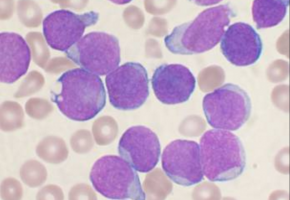
New four-year follow-up results from the Phase 3 GLOW study (Abstract #93), were announced during the 2022 American Society of Hematology (ASH) Annual Meeting, which showed investigational, fixed-duration treatment with ibrutinib + venetoclax (I+V) reduced the risk of progression or death by 79 percent among older and/or unfit patients with previously untreated chronic lymphocytic leukaemia (CLL) compared to patients treated with chemoimmunotherapy.
CLL is the most common form of leukaemia in adults in the U.S. and currently has no cure. While the treatment landscape has evolved significantly since the emergence of targeted agents, there is still a significant unmet need for novel treatment options, including fixed-duration regimens.
“The GLOW study results demonstrate the potential of fixed-duration I+V to become an additional treatment option for older, unfit patients with CLL in the first-line setting, and this fixed-dose combination may offer a flexible regimen for patients seeking a time-limited treatment approach,” said study investigator Carsten Niemann,† M.D., Ph.D., Clinical Associate Professor and Principal Investigator at Rigshospitalet, Copenhagen, Denmark. “This first all-oral, fixed-duration novel combination demonstrates an OS advantage in the first-line treatment of CLL and is an innovative option for patients.”
In the study, fixed-duration I+V therapy exhibited robust efficacy in older and/or unfit adults with previously untreated CLL, with a superior and sustained benefit in progression-free survival (PFS) with four years of follow-up. Seventy-five percent of patients treated with the combination were alive and progression-free at 3.5 years.
I+V also demonstrated an OS advantage versus chlorambucil plus obinutuzumab (Clb+O) at this latest study follow-up.1 Exploratory analyses showed that post-treatment PFS rates were higher for I+V (n=106) than Clb+O (n=105), regardless of minimal residual disease (MRD) status post-treatment.
GLOW Results
With a median 46 months of follow-up, I+V reduced the risk of disease progression or death by 79 percent versus Clb+O (Hazard Ratio (HR) 0.214; [95 percent Confidence Interval (CI), 0.138-0.334]; p<0.0001).
I+V is the first fixed-duration novel combination to demonstrate an OS advantage compared to Clb+O in the first-line treatment of CLL (HR 0.487; [95 percent CI, 0.262-0.907]; nominal p=0.0205).
An estimated 74.6 percent of previously untreated older and/or comorbid patients were alive and progression-free at 3.5 years with all-oral, once-daily, fixed-duration I+V treatment compared to an estimated 24.8 percent of patients in the Clb+O cohort.
PFS at 3.5 years was higher for patients in the I+V arm compared to the Clb+O arm for both unmutated IGHV (uIGHV) and mutated IGHV (mIGHV) CLL.
PFS was better sustained in the I+V arm compared to the Clb+O arm, regardless of MRD (≥10-4) status, measured at three months following end of treatment.
Two years after end of treatment, estimated PFS was ≥ 90 percent for patients with mIGHV CLL, independent of MRD status, and for the 60 percent of patients with uIGHV CLL who achieved undetectable MRD (uMRD).
Updated data for both studies showed the safety profile of the I+V regimen was consistent with known safety profiles of ibrutinib and venetoclax.
“Ibrutinib has helped change the standard of care for adults living with CLL and other B-cell malignancies, and this study adds to the extensive body of evidence supporting its potential to provide improved survival for patients with CLL. These results highlight the potential for front-line CLL patients to be treated with an all-oral, fixed-duration treatment,” said Craig Tendler, M.D., Vice President, Late Development and Global Medical Affairs, Janssen Research & Development, LLC. “At Janssen, we are committed to addressing the unmet needs of patients with CLL through continued investment in our Iibrutinib clinical development programme.”
In addition to the GLOW results, data from the Phase 2 CAPTIVATE study of the MRD cohort (PCYC-1142) (Abstract #92), which utilised the same I+V schedule for the first 15 cycles as in the GLOW study, were also presented in an oral session at ASH.
After the first 15 cycles, patients with confirmed uMRD (n=86) were randomized to ibrutinib or placebo. Disease-free survival at three years post-randomization was 93 percent for ibrutinib and 85 percent for placebo.3 PFS rates at four years from start of treatment were 95 percent and 88 percent, respectively, and OS rates were 98 percent and 100 percent.
During the three-year post-randomization period, no new atrial fibrillation events occurred in the placebo arm, and no new grade three or higher haemorrhage events occurred in either arm. The incidences of hypertension, arthralgia, neutropenia and diarrhoea were generally infrequent in the placebo arm during this time period. No deaths occurred in either arm during the last 12 months of follow-up.
Source: Janssen
We are an independent charity and are not backed by a large company or society. We raise every penny ourselves to improve the standards of cancer care through education. You can help us continue our work to address inequalities in cancer care by making a donation.
Any donation, however small, contributes directly towards the costs of creating and sharing free oncology education.
Together we can get better outcomes for patients by tackling global inequalities in access to the results of cancer research.
Thank you for your support.